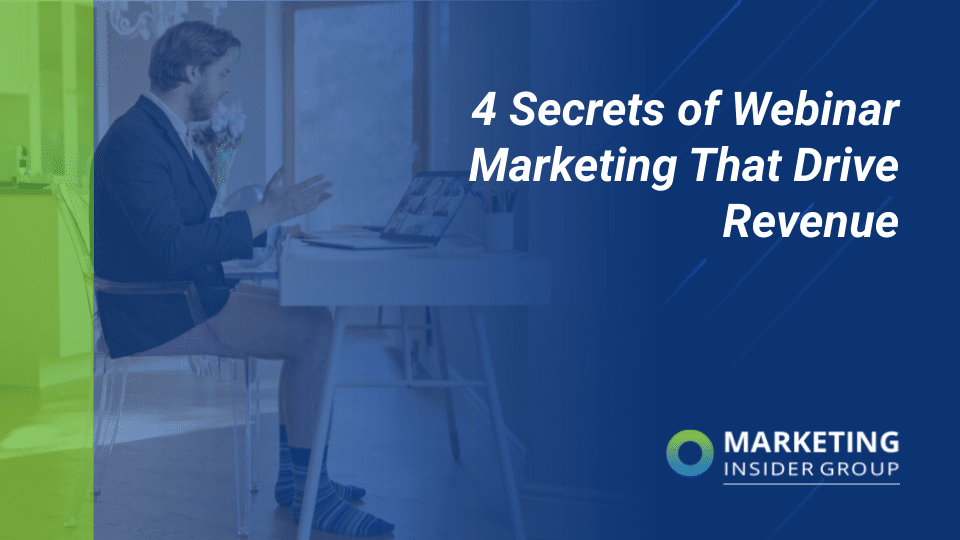
The Best Ways to Drive Conference Attendance this Spring
The business-to-business marketing mix is always changing, but there’s one tactic that consistently proves effective for B2B companies: conferences and tradeshows.
After surveying a group of marketing and management professionals this year, it’s been reported that conferences and tradeshows top the funnel for producing the most leads and the garnering the highest ROI for B2B companies.
How should you capitalize on this ROI-rich tactic? Once your conference is booked, it’s time to promote, promote, promote. Consider these steps to ensure record attendance at your next industry event:
- Leverage On-Site Content
When hosting a conference or tradeshow, the first step is adding the event information to your website. Develop a specific landing page for attendee registration that includes a compelling event description. The page should state the event’s intent, topics, time, place and the benefits for each type of attendee. In addition, add speaker bios with photos, a branded event image, and a prominent registration button. If the event occurs annually, upload photos and testimonials from previous years.Once your event is well-established on your website, capitalize on the opportunity to create more on-site content surrounding your event. From an SEO perspective, being comprehensive will always help your cause. If you were thinking of publishing just one blog announcing your upcoming event – try to think bigger. For example, consider coming up with a blog series. Work with your events team to brainstorm related topics such as the top benefits for each type of audience(s), teasers about the presentations, in-conference networking tips and of course, post-conference insights. - Set Public Relations in Motion
There’s nothing like a little old-fashioned PR. Start with a standard press release to alert local reporters about your event. Be sure to mention any notable parts of the program, such as a big announcement that will be revealed during the event. When distributing the release and reaching out to reporters, start with local media before diving in with the big players; if your event gains traction on a smaller scale, it will help gauge whether or not there’s nationwide interest. In addition, reach out to specialized publications like trade magazines and blogs. CNN may not be interested in covering a CRM software conference, but “Software Today” may print a feature story.Beyond your in-house PR crew, see if organizations you’re affiliated with or the actual event partners will help you promote the conference. There’s no harm in asking – every resource counts when striving for event success! - Utilize Email Marketing
Email marketing is a valuable tool in your event planning arsenal. So at what stage should you start hitting the inboxes? The answer is: before, during and after your conference. That doesn’t mean you should spam your targeted email list, but rather provide prospective attendees need-to-know information. Thoughtfully identify the key dates leading up to your final registration week to determine what your messaging should be and the best time to share it. For example:- Save the Date Notifications: This email is perfect for your early planning stages and can be sent prior to publishing on-site content or opening registration. It’s a simple message that alerts your target invitees about the impending event and to mark it on their calendars. The messaging should indicate when registration will open and when more information will become available.
- Registration Reminders: As soon as registration opens, it’s time to hit the inboxes again. But don’t count on your first email to land all your conference RSVPs. Send out reminder messages, sparingly, to ensure that your message is being heard. These emails can also include teasers about what to expect at the conference, such as an industry recognized thought leader, new breakout sessions, exciting excursions and more.
- In-Conference Announcements: Use email marketing during the conference to announce schedule changes, special offers such as private networking events, and to promote exciting booths or speakers. Your event signage can even feature language reminding attendees to check their email for important reminders and notifications.
- Post-Conference Feedback: Take time to say thank you to those who came out to your event, but also use this last line of communication as a learning experience. Include a link to a survey so individuals can say what you did well and what you could improve upon next year.
Email marketing is a tried and true technique, but make sure you are following current best practices, such as optimizing for mobile, to garner the most results from your efforts.
- Take Advantage of Social Media
Last but not least, spread the message on social! Prior to the conference, use social accounts to funnel potential attendees to your event landing page. Another social necessity is a conference hashtag. Not only will the hashtag compile all your event posts in one place, but it’s also a great way to build a community once your conference is underway. Attendees can post photos, share feedback, and use the hashtag to connect with industry peers. Your hashtag should be simple, memorable and most of all make sense. For example, if Sagefrog Marketing Group is hosting an annual event in Philadelphia, the hashtag might look like: #SFPhilly2017. Speaking of community engagement, repeatedly encourage attendees to post videos and pictures throughout the event. If you really want to encourage social interaction, offer a prize or added benefit for the most-liked photo.
Planning a conference can be a tall order, requiring months of preparation. Establish your goals for the event early on and use your time and resources wisely to reach them. Hopefully, the above tactics will help your B2B company garner great conference success – good luck!






